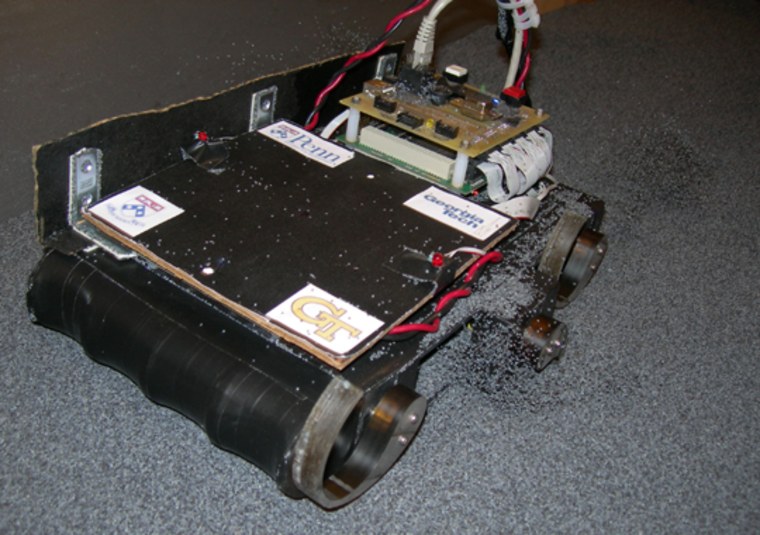Crabs make walking on sand look so easy. It's a simple motion that has so far baffled scientists who have unsuccessfully tried to recreate the movement in legged robots.
Now scientists from Georgia Tech have created the SandBot, the first legged robot that can scurry across sundry sandy surfaces.
"We are very interested in why animals can so effortlessly run across all sorts of natural terrain," said Chen Li, a student at Georgia Tech and the lead author of the paper published today in the Proceedings of the National Academy of Sciences.
"By understanding how animals and SandBot move on sand we can learn more about granular physics," said Li.
Eventually the Georgia Tech scientists hope to apply their findings to other robots," including those that might travel to other planets.
The predecessor to SandBot was RHex, a six-legged robot with soft and flexible "C" shaped feet developed by Danial Koditschek at the University of Pennsylvania and donated to Georgia Tech. Based on a cockroach, the squat, three-kilogram (6.6-pound), 30-centimeter- (11.8-inch-) long robot successfully walked across a wide range of surfaces, including rubble, leaves, grass and dirt.
Georgia Tech scientists expected that what had worked so well on other surfaces would work just as well on sand, or poppy seeds, in the case of the Georgia Tech experiments. RHex's soft, flexible feet would distribute the robot's weight across sand, just like snowshoes do for winter travelers.
The first experiments with Sandbot were a failure. Like a car spinning its tires only to sink deeper, Sandbot's six legs moved so quickly that the entire robot simply sank.
Slowing down leg speed while increasing the amount of time the leg actually touched the sand helped the SandBot moving across a wide range of sandy surfaces, from hard-packed slabs to loose grains. Meanwhile, scientists cut the SandBot's top speed of 60 centimeters per second (23.6 inches per second) in half.
Another, and as yet unpublished, addition to the SandBot, was changing the soft feet to harder feet. A hard foot would presumably sink more easily into a soft, unstable substrate, but the hard feet proved faster for the robot.
In nature, sand-crawling crabs also employ hard feet. The scientists explain millions of years must have evolved an effective sand-walking solution, even if scientists don't yet understand the logic.
"Evolution has achieved an efficient solution to this complex problem," said Harry Swinney, a physicist at the University of Texas at Austin.
The best place to use legged robotic locomotion might not be the sandy beaches of Earth, but rather on the dusty plains of the moon, Mars or other planets.
"A legged animal can negotiate rough and uneven terrain," said Andrew Biewener of Harvard University, who studies animal locomotion. "A traditional vehicle transport with wheels requires hard, flat and smooth surfaces."
Li and his adviser at Georgia Tech, Daniel Goldman, hope to work with NASA to develop a legged extraterrestrial explorer, but until then SandBot will help biologists better understand Earth-bound creatures.
"If you have a hypothesis [about how an animal moves] and can build and test a device that employs those principles, it can be very compelling evidence," said Biewener. "It validates the biologists study of the animal."
More on Robots | Innovation
